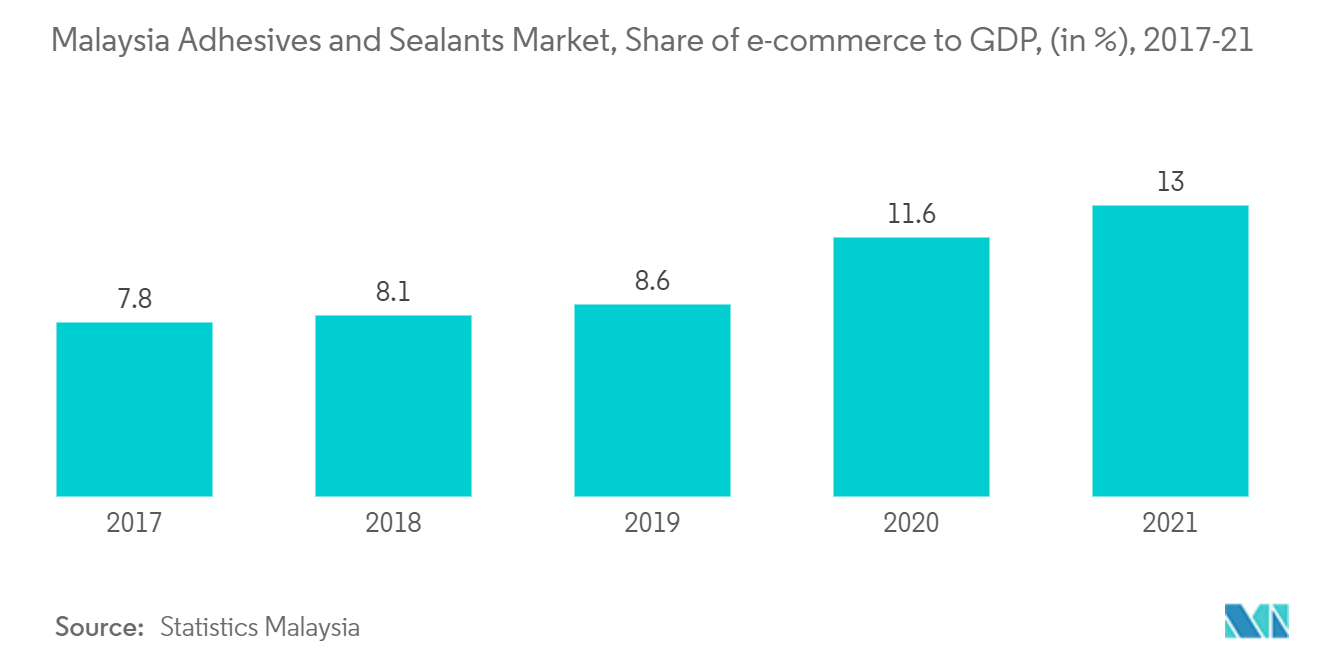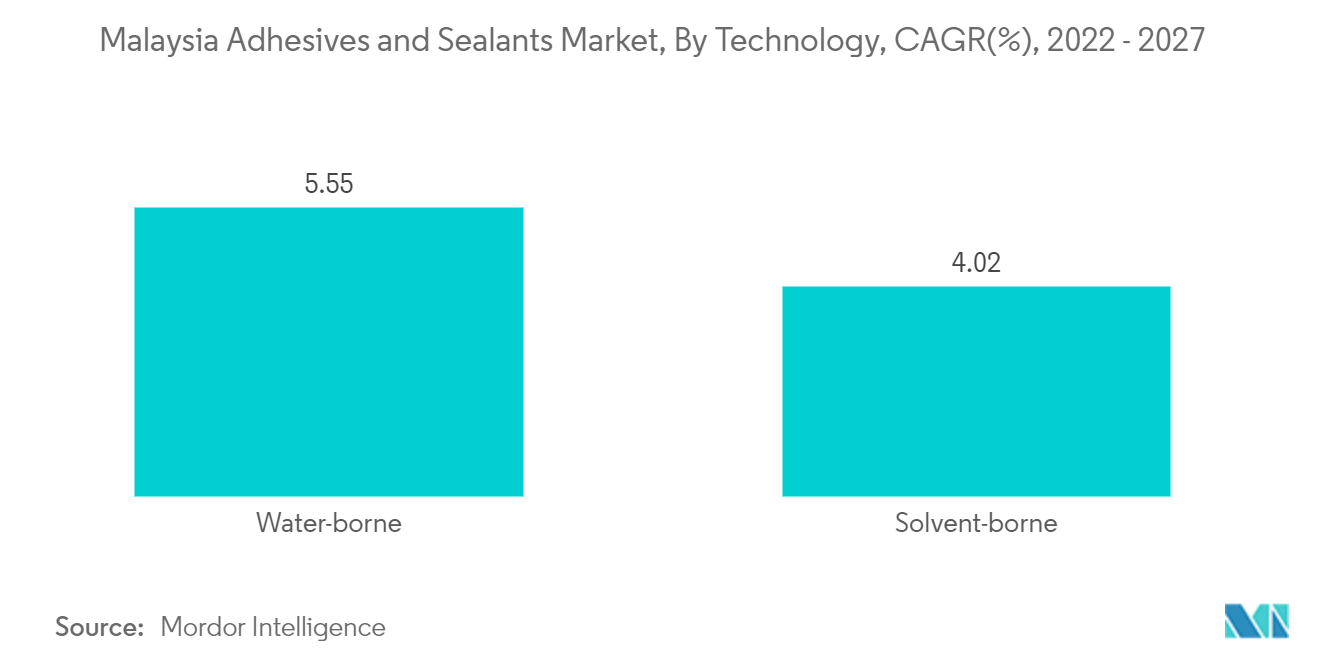Market Trends of Malaysia Adhesives and Sealants Industry
This section covers the major market trends shaping the Malaysia Adhesives & Sealants Market according to our research experts:
Increasing Demand from Packaging Industry
Packaging is a fast-growing industry in terms of design and technology for protecting and enhancing products' safety and longevity.
- The demand for quick and on-the-go packaged items is increasing due to consumers' busier lifestyles, greater spending power, and related factors in the country. Due to the COVID-19 pandemic, the country-wide lockdowns and temporary shutdown of manufacturing facilities caused several issues, including disruptions in supply chains, imports, and exports.
- The growing e-commerce sector is expected to boost packaging as people move toward convenience. Logistics companies are coming into play to support manufacturers, distributors, wholesalers, and retailers in delivering their packages. Hence, driving the market significantly.
- For instance, in 2021, the gross value contributed by the e-commerce sector to the GDP increased to 13 percent from 11.6 percent in 2020. Since 2015, there has been an upward trend in the contribution of e-commerce to the Malaysian GDP.
- Also, some of the significant factors contributing to the development of the packaging industry in the country are the growing demand for packaged goods from pharmaceutical, food processing, manufacturing, FMCG, healthcare, and ancillary industries.
- For instance, from January to April 2022, Malaysia's food and beverage sales increased by 11.5 percent over the same time last year, contributing almost USD 1.7 billion to the USD 14 billion total wholesale sales value. The country's food shops are quickly expanding, with upscale grocery and convenience stores becoming increasingly popular.
- Thus, owing to the factors mentioned above, expanding the packaging industry will likely drive the market during the forecast period.

Growing Adoption of Water-borne Adhesives
- Water-borne is the majorly consumed adhesive technology across the country due to its favorable properties for multiple applications or end-user industries.
- Water-borne adhesives are often designed as dispersions or emulsions. The distributed polymer (latex) particles have a spherical form with a diameter of 50 - 300 nm. Since the concentration of the developing chains within each latex particle is shallow, high molecular weights are typically attained in emulsion polymerization.
- These adhesives are commonly used in the woodworking and footwear industries for bonding wood, paper, textiles, leather, and other porous substrates.
- Acrylic waterborne adhesives are the major resin type due to their cheaper cost and favorable environmental properties. They are also easier to use with multiple substrates and have moderate strength and resistance to temperature and other environmental factors.
- Waterborne adhesives are more environmentally friendly, have negligible VOC content that does not hamper the safety of workers at manufacturing sites, and are less expensive than other types of technologies.
- Thus, these factors are expected to boost demand for waterborne adhesives over the coming years.


